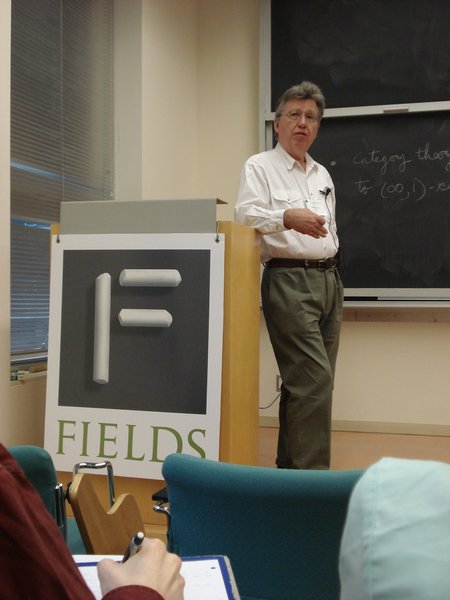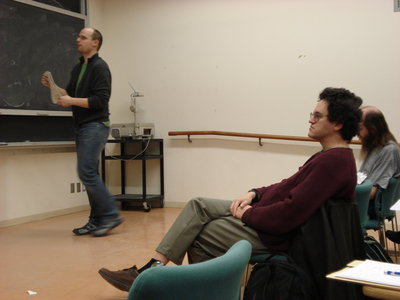Higher Categories and Their Applications
Posted by John Baez
The Fields Institute workshop on n-categories was a lot of fun. If you couldn’t make it, you can still see what it was like. Here’s a webpage with abstracts, transparencies and photos of lots of the talks:
- Higher Categories and Their Applications, Fields Institute, January 9-13, 2007.
Someday soon I want to describe some of these talks — but not tonight.
Here are a couple of the photos that Dan Christensen took at the workshop.
André Joyal:

Urs Schreiber, John Baez and Toby Bartels:

There are a lot more photos in disorganized form here. If you went there and took some pictures, please pass them on to me, or at least give me links!

Re: Higher Categories and Their Applications
So how many of our questions got answered?